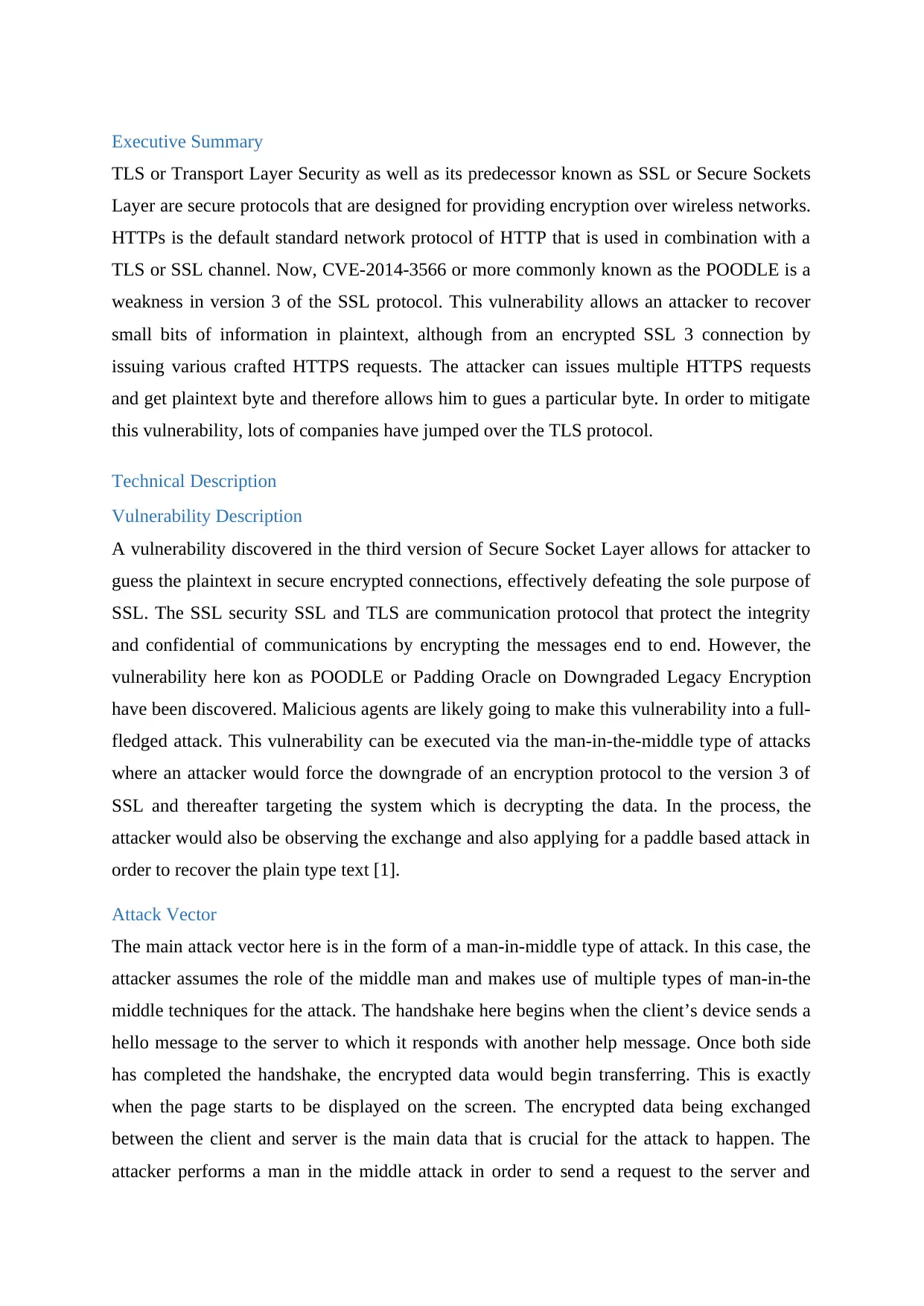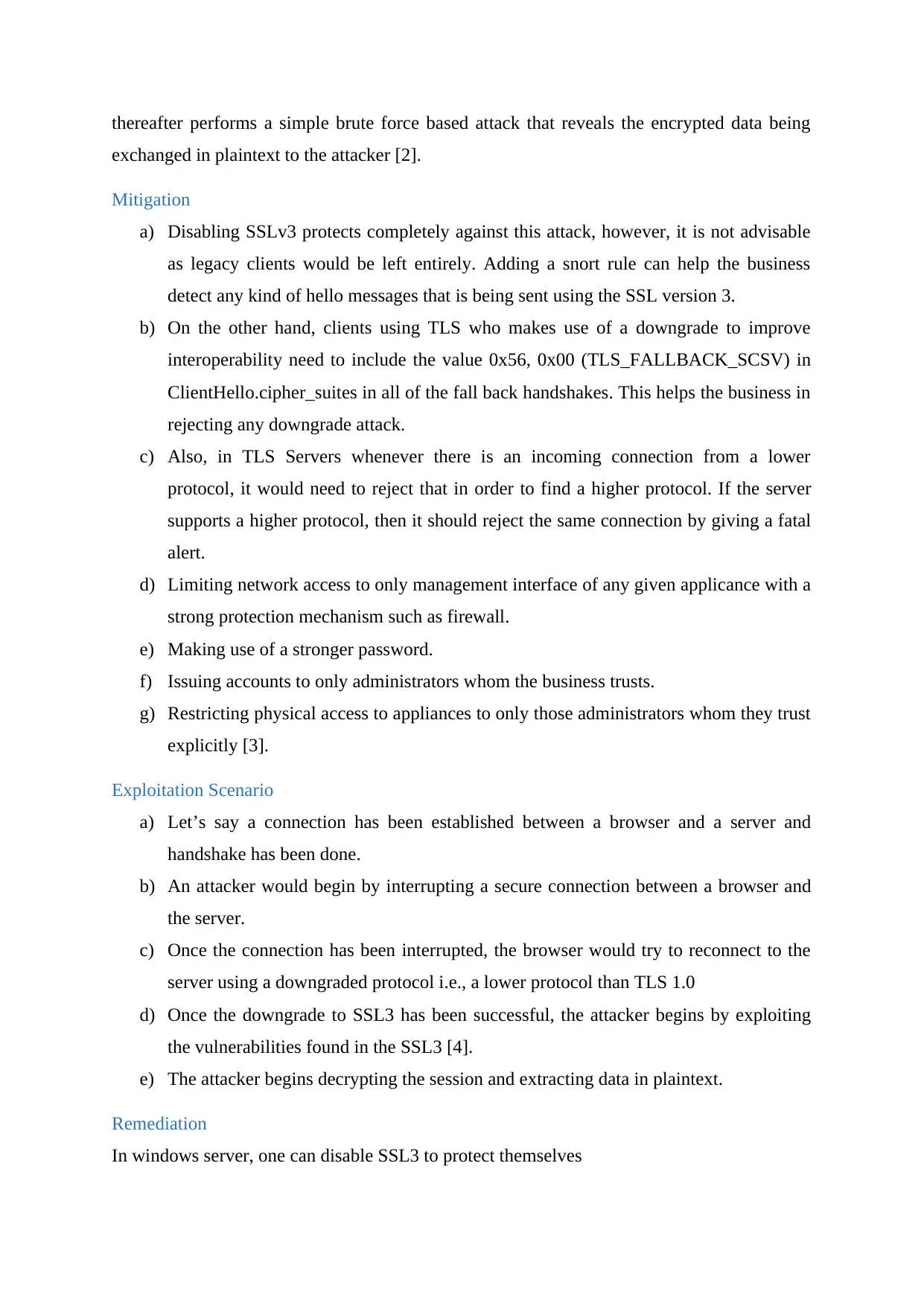POODLE Attack Mitigation
VerifiedAdded on 2019/09/19
|3
|1049
|439
Report
AI Summary
TLS (Transport Layer Security) and SSL (Secure Sockets Layer) are secure protocols that provide encryption over wireless networks. However, a vulnerability in version 3 of the SSL protocol, known as POODLE (Padding Oracle on Downgraded Legacy Encryption), allows an attacker to recover small bits of information in plaintext from an encrypted SSL connection by issuing various crafted HTTPS requests. This vulnerability can be mitigated by disabling SSLv3, adding Snort rules, and configuring TLS servers to reject downgrade attacks.
Contribute Materials
Your contribution can guide someone’s learning journey. Share your
documents today.
1 out of 3
![[object Object]](/_next/static/media/star-bottom.7253800d.svg)








